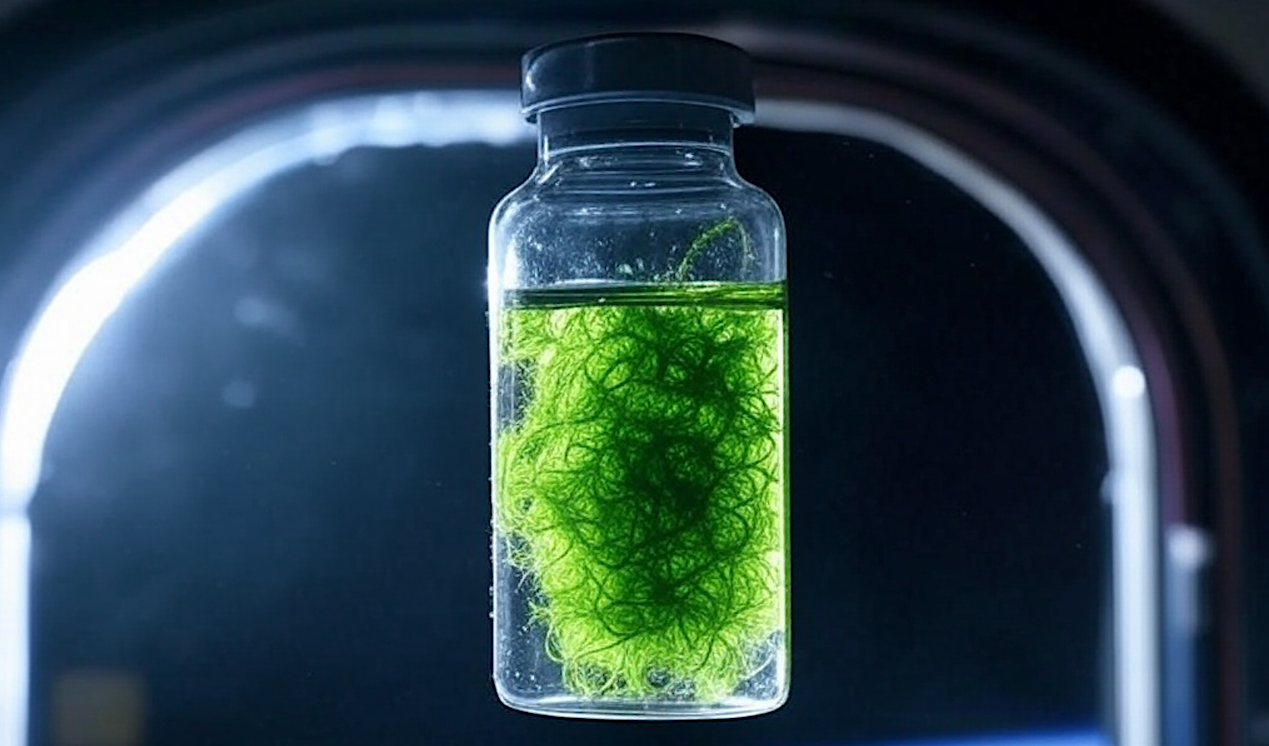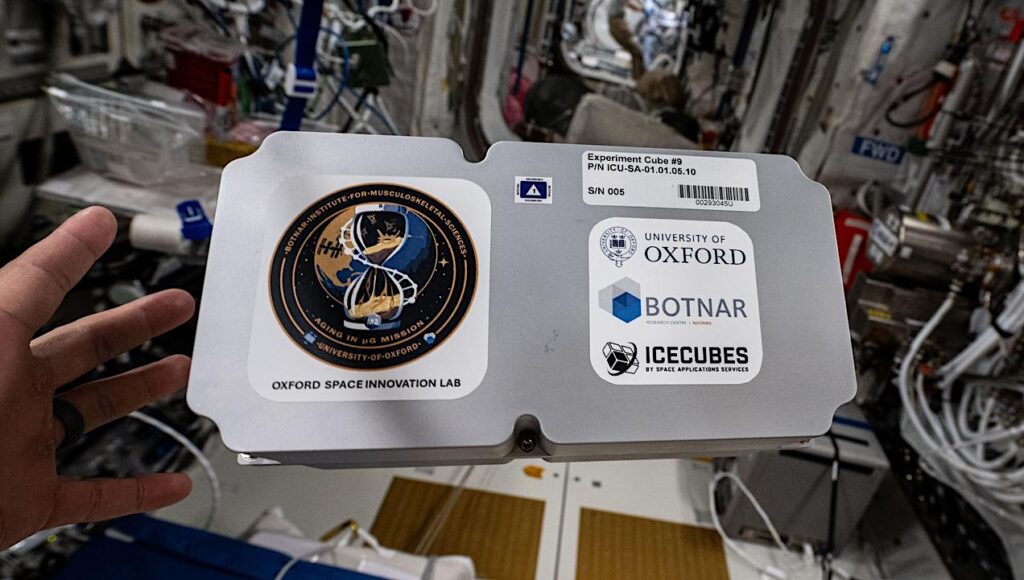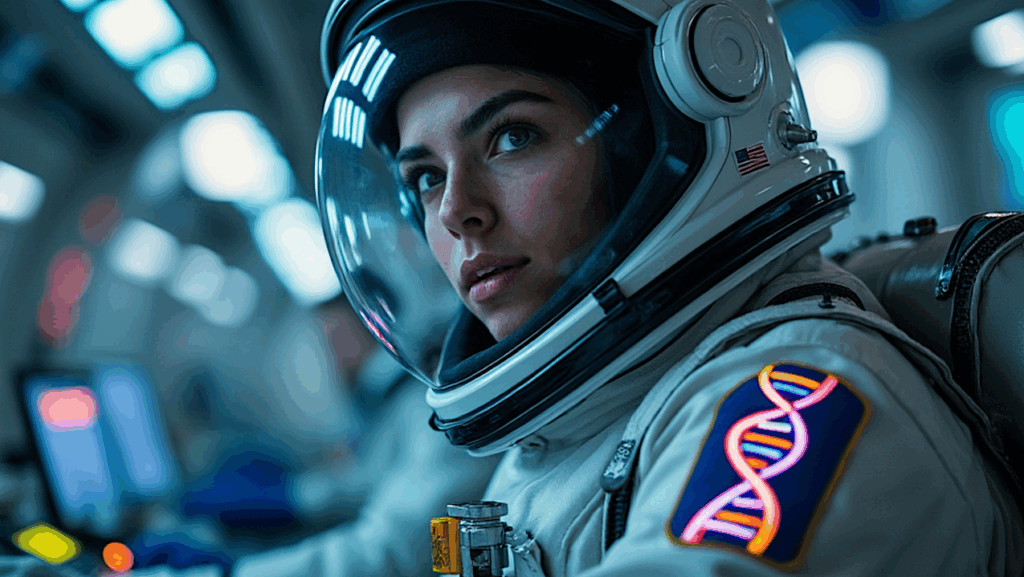NASA Spaceline Current Awareness List #1,159 25 July 2025 (Space Life Science Research Results)

space life science – Astrobiology.com
The abstract in PubMed or at the publisher’s site is linked when available and will open in a new window.
Papers deriving from NASA support:
- Barbero Barcenilla B, Rivero R, Lynch A, Cromer W, Gong J, Harandi B, Stegmann M, Le H, Lundine D, Chung M, Puig J, Mikhailova K, Coker H, Marks A, Gilbert R, Scott R, Barker R, Glowe P, Overbey EG, Mason CE.Feeding the cosmos: Tackling personalized space nutrition and the leaky gut challenge.npj Microgravity. 2025 Jul 18;11:45.PI: C.E. MasonNote: This article may be obtained online without charge.
Journal Impact Factor: 5.1
Funding: “This work was coordinated through the OSDR/Genelab Analysis Working Groups, as a collaboration across the Plant, ALSDA, and Human AWGs, as well as with BioAstra. We thank NASA OSDR for its continuous contributions in developing this research, as well as the Waypaver Foundation for their support. We also thank funding from WorldQuant, NASA (80NSSC22K0254, 80NSSC24K0728, 80NSSC24K1052) and the NIH (U54AG089334).” - Kumar K, Kumar S, Angdisen J, Datta K, Fornace AJ, Suman S.Radiation quality-dependent progressive increase in oxidative DNA damage and intestinal tumorigenesis in Apc1638N/+ mice.Curr Oncol. 2025 Jul 1;32(7):382.PIs: A.J. Fornace, S. SumanNote: This article is part of Section “Gastrointestinal Oncology” (https://www.mdpi.com/journal/curroncol/sections/Gastrointestinal_Oncology) and may be obtained online without charge.
Journal Impact Factor: 3.4
Funding: “This research was funded by the National Aeronautics and Space Administration (NASA), grant number NNX15AI21G (PI: Albert J. Fornace, Jr.), 80NSSC22K1279 (PI: Albert J. Fornace, Jr.), and 80NSSC24K0287 (PI: Shubhankar Suman). We acknowledge the Lombardi Comprehensive Cancer Shared Resources, which is supported by NCI grant number P30CA051008 (PI: Louis Weiner).” - Zakharyan R, Hakobyan S, Brojakowska A, Bisserier M, Zhang S, Khlgatian MK, Rai AK, Davitavyan S, Stepanyan A, Sirunyan T, Khachatryan G, Sahoo S, Garikipati VNS, Arakelyan A, Goukassian DA.The effects of space radiation on the transcriptome of heart right ventricle tissue.npj Microgravity. 2025 Jul 21;11:46.PI: D.A. GoukassianNote: This article may be obtained online without charge.
Journal Impact Factor: 5.1
Funding: “The authors would like to acknowledge the support of Peter Guida, MaryAnn Petry, and their staff on the NASA support team at the Biology Department and BLAF animal facility at Brookhaven National Laboratory for their help with our longitudinal mouse lifetime studies. We would also like to acknowledge Adam Rusek and the NSRL operations team for their support in our particle radiation studies. This work was funded by the NASA Human Research Program, grant No: 80NSSC19K1079 (formerly, 80NSSC18K0921) and grant No: 80NSSC21K0549 (PI – Kenneth Walsh, DAG – subcontract) to D.A.G. and the ADVANCE Research Grant funded by the Foundation for Armenian Science and Technology and Research Grant 25FAST-1F004 funded by the Higher Education and Science Committee of the Ministry of Education, Science, Culture and Sport of the Republic of Armenia. This study was also supported by the National Institutes of Health/National Heart, Lung, and Blood Institute (NIH/NHLBI) under grants K01HL159038-01A1 and R25HL146166 (to MB), the American Heart Association Career Development Award (24CDA1269532 to MB), and the American Thoracic Society Research Program (Grant No. 23-24U1 to MB). …” - Fettrow T, Stephens C, Prinzel L, Holbrook J, Ballard K, Bastami S, Stewart M, Kiggins D.Human contributions to safety data testbed flight simulation study: Data methods, processing, and quality.Sci Data. 2025 Jul 16;12(1):1247.Note: This article is a Perspective and may be obtained online without charge.
Journal Impact Factor: 5.1
Funding: L.J. Rothschild is affiliated with NASA Ames Research Center.
Other papers of interest:
- Mathyk B, Pandya S, Wright Beatty H, Anderson ML, Kohut A.Handheld point-of-care ultrasonography for gynecology: Insights into space travel through parabolic flight.Obstet Gynecol. 2025 Jul 24. Online ahead of print.
- Chung M, Lee PHU.Chapter 22 – Challenges of the musculoskeletal system in space.In: Krittanawong C, ed. Precision Medicine for Long and Safe Permanence of Humans in Space: Academic Press, 2025. p. 335-49.
- Hao W, Patil S, Ru K, Qian A-R, Lin X.Chapter 13 – Ground-based simulation equipment and technology for space biology experiments.In: Qian A-R, Lin X, Patil S, Farooq HMU, eds. Space Biology and Space Biotechnology: Academic Press, 2025. p. 193-201.Note: From the abstract: “In this chapter, the techniques and equipment commonly used in the simulation research of space mechanics and radiation are summarized.”
- Hao W, Yun C, Farooq HM, U., Qian A-R, Lin X.Chapter 8 – Space radiation biology.In: Qian A-R, Lin X, Patil S, Farooq HMU, eds. Space Biology and Space Biotechnology: Academic Press, 2025. p. 125-33.
- Hoying M, Benjelloun I, Otuya D, Tearney G.Measuring the microgravity response in epithelial tissue barrier function: A path to flight.AIAA Aviation Forum and ASCEND. 2025 Jul 16. Online ahead of print.Note: From the abstract: “Epithelial tissue serves an important barrier function in the body. In spaceflight, exposure to microgravity could disrupt this barrier and cause significant health problems for astronauts. There is a need for real-time monitoring of the epithelial barrier function to determine when countermeasures are needed. One possibility for conducting this measurement in vivo is the use of potential difference (PD) probes, which have been developed for use on Earth. Here, we outline the path to flight for the use of PD probes in astronauts in space.”
- Kanani A, Krasowska J, Fornalski KW, Bevelacqua JJ, Welsh J, Mortazavi S.Adaptive response: A scoping review of its implications in medicine, space exploration, and beyond.Dose Response. 2025 Jul 19;23(3):15593258251360051. Review. Online ahead of print.Note: This article may be obtained online without charge.
- Polianichenko A, Bobkov, DN, Riumin, OO.[Dynamics of human cognitive functions while solving sophisticated dynamic cases in the condition of 21-day bedrest.]Aerosp Med Hum Perform. 2025;59(3):17-23. Russian.
- Popova OV, Rusanov VB, Nosovsky AM, Orlov OI.[Use of the distribution function in analysis of the cardiac rhythm variability.]Aerosp Med Hum Perform. 2025;59(3):31-6. Russian.
- Sidorenko DA, Lvova ID, Sharlo KA.[Blocking the oxidation of ryanodine receptors prevents growth of proteolysis markers and a decrease of protein synthesis parameters following 7-day hindlimb suspension in rats.]Aerosp Med Hum Perform. 2025;59(3):24-30. Russian.
- Nie M, Zhao Y.Creating a lunar-centric legal regime to preserve peaceful and sustainable uses of cislunar space: Proposing initial measures.Acta Astronaut. 2025 Jul 21. Online ahead of print.
- Xun R, Zhang Z, Chang L.H3-astronaut pose net: A multiview 3D astronaut pose estimation system for spacecraft.Neurocomputing. 2025 Oct 14;650:130877.Note: From the abstract: “Recent years have witnessed the materialization of intelligent space station concepts, with operational paradigms transitioning from mechanized to intelligent systems. This technological evolution relies on robust human-machine interaction systems, which necessitate precise positioning and joint posture measuring of astronauts within intracabin environments. We propose a multi-view voxel-based fusion network (Astronaut Pose Net, APN: comprising Human Centroid Net, Human Localization Net, and Human Joints Net).”
- Yakubets DA, Rudimova YV, Buravkova LB.Transcriptomic changes in mouse lung tissue after a long-term spaceflight.Bull Exp Biol Med. 2025 Jul 18.Note: From the abstract: “Here, we examined the transcriptomic profile of mouse lung tissue after a long-term space mission as part of the NASA Rodent Research scientific program. We identified 45 differentially expressed genes.”
- Patil S, Li H, Bai W, Yang C, Qian A-R.Chapter 9 – Space controlled ecology.In: Qian A-R, Lin X, Patil S, Farooq HMU, eds. Space Biology and Space Biotechnology: Academic Press, 2025. p. 135-51.
- Ethier CR, Herberg S.Mechanobiology in the eye.npj Biol Phys Mech. 2025 Jul 4;2(1):18. Review.
- Ge L, Gao Y, Du F, Ma C, Xiao T, Yang Y, Lei X, Zhang JV.The critical role of enhanced OXPHOS and mitochondrial hyperpolarization in simulated microgravity-induced oocyte maturation arrest.Adv Sci (Weinh). 2025 Jul 18;e05570. Online ahead of print.Note: A rotating cell culture system was used in this study to simulated microgravity. This article may be obtained online without charge.
- Yuan M, Zhang T, Liu H, Long M, Wang Q, Jiang W.Exploring molecular and modular insights into space ionizing radiation effects through heterogeneous gene regulatory networks.npj Microgravity. 2025 Jul 18;11:44.Note: This article may be obtained online without charge.
- Boggs TE, Bucher LR, Gross JB.RNA-seq analysis of blood from cave- and surface-dwelling Astyanax morphs reveal diverse transcriptomic responses to normoxic rearing.Front Physiol. 2025 Jul 16;16:1617136.Note: This article is part of Section “Physiological and Pathological Responses to Hypoxia and High Altitude, Volume III” (https://www.frontiersin.org/research-topics/66099/physiological-and-pathological-responses-to-hypoxia-and-high-altitude-volume-iii). This article may be obtained online without charge.
- de Almeida LY, Dietrich C, Hanner AS, McTighe KM, Martin D, Fairbanks T, Link TM, Le JM, Curry N, Jani P, Gao X, Yu W, Mariani FV, Duverger O, Lee JS.Skeletal maturity and age-related changes in immune cells and circulatory factors impair large-scale bone regeneration.Aging Cell. 2025 Jul 21;e70177. Online ahead of print.Note: This article may be obtained online without charge.








